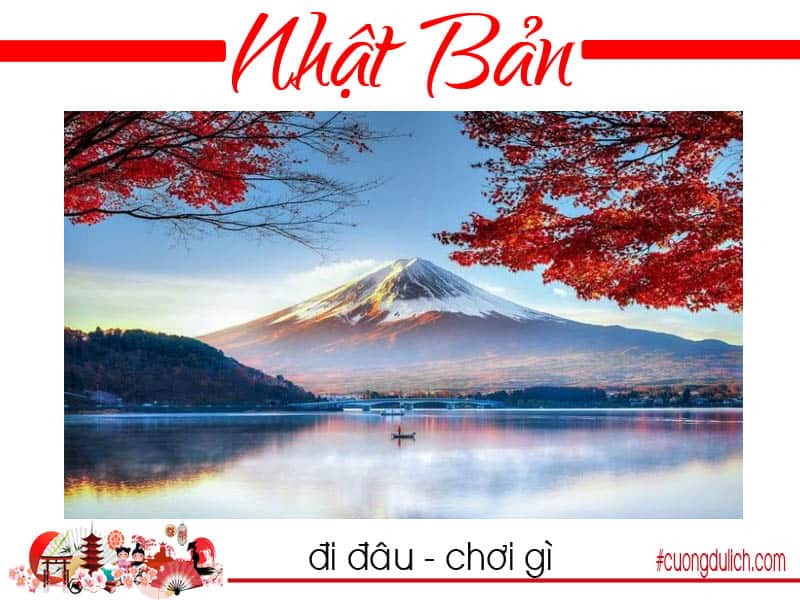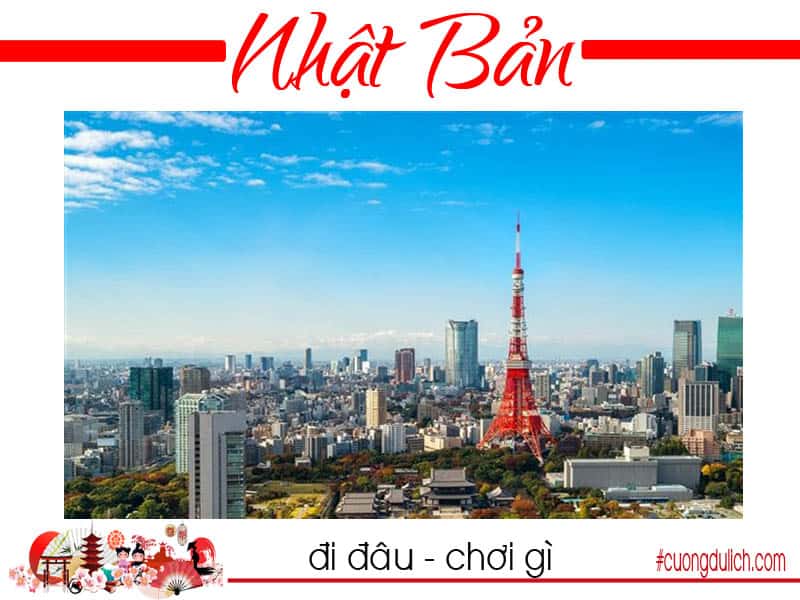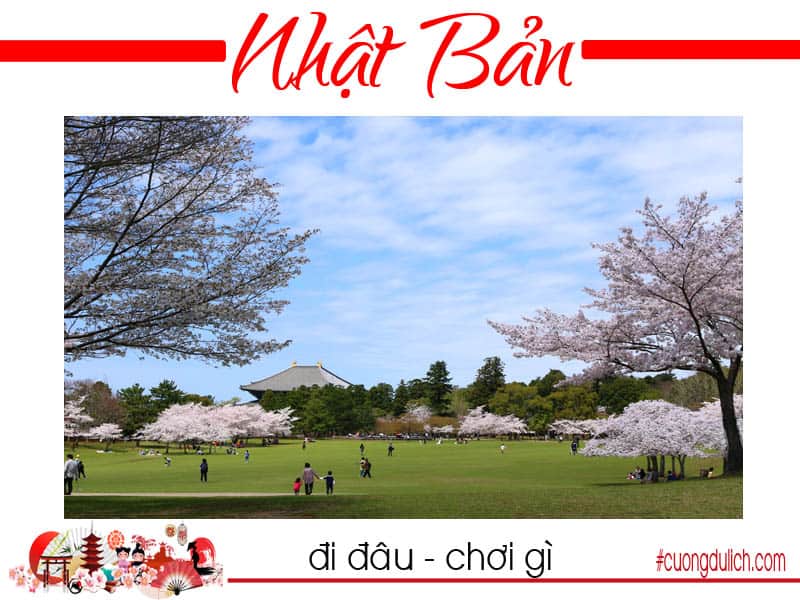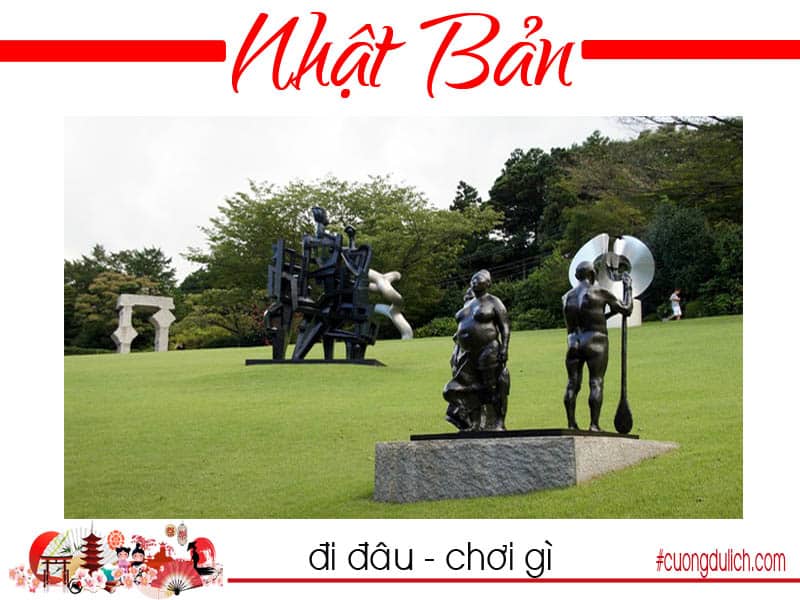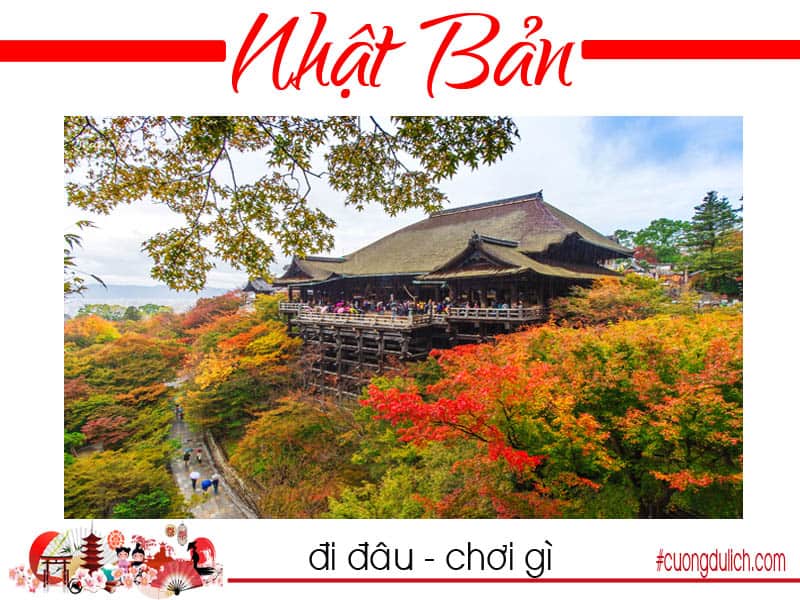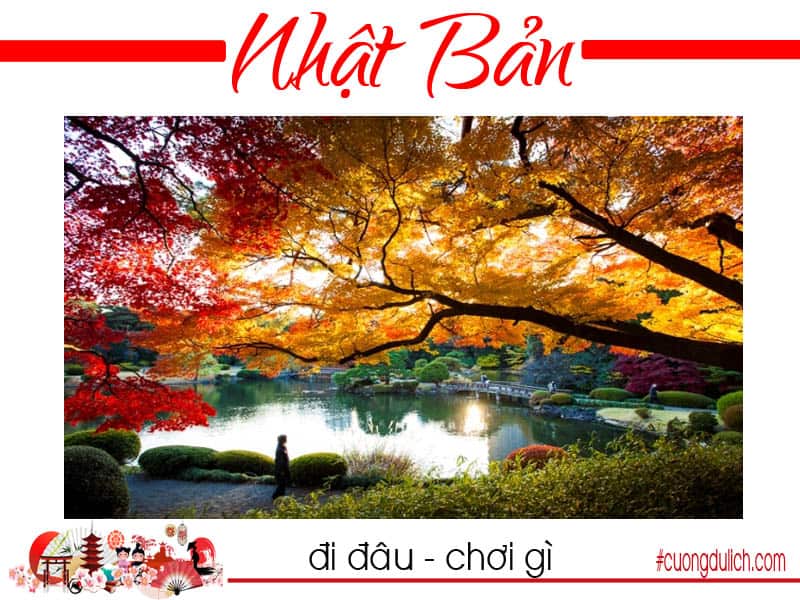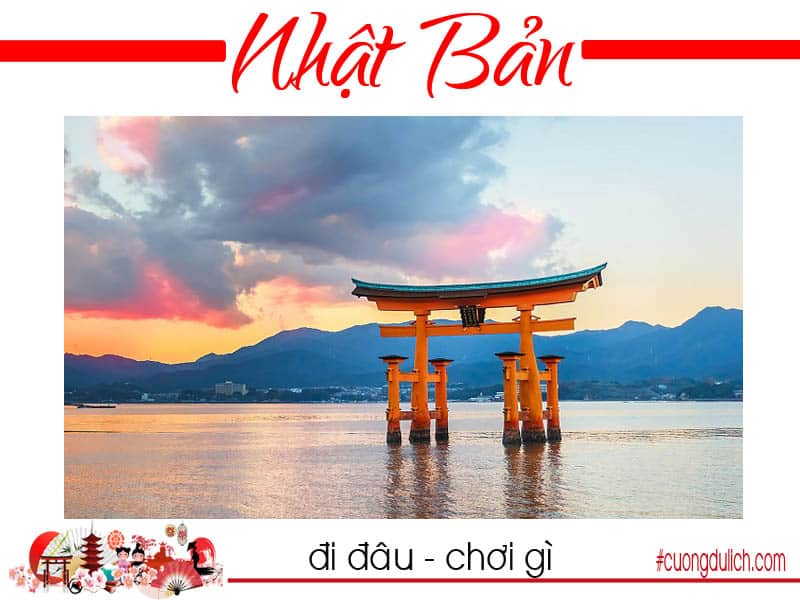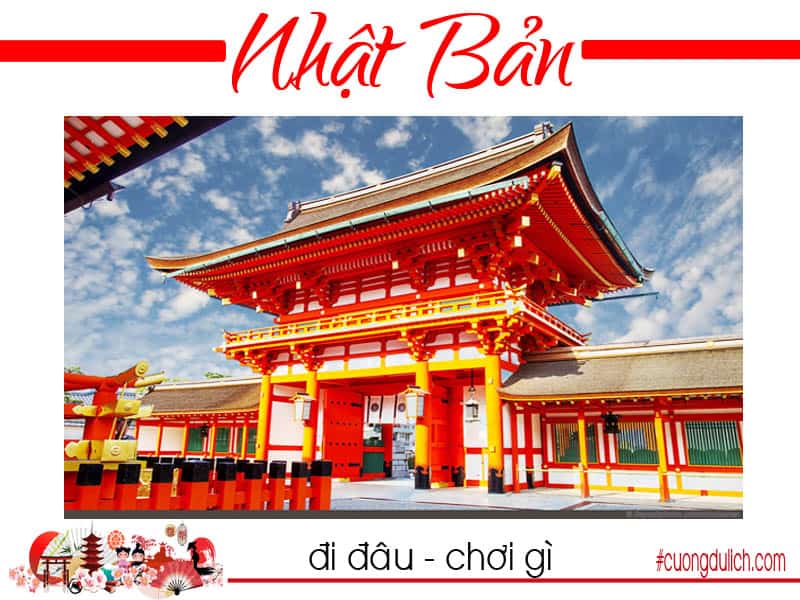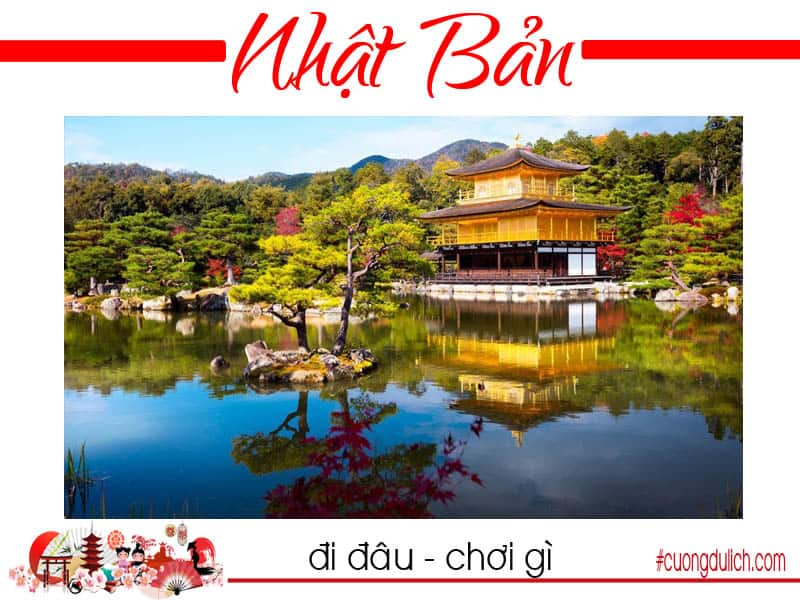Traveling to Japan is like visiting the land of cherry blossoms, a place that remains a dream for many tourists around the world. When you travel to Japan, you can visit modern and bustling cities like Tokyo, Yokohama, or explore traditional and ancient regions like Kyoto, Nagoya; or immerse yourself in the beautiful natural scenery of Mount Fuji. Additionally, you can enjoy the delicious and unique cuisine of this country and participate in cultural festivals rich in national identity. So, follow the footsteps of travel enthusiasts to explore the top 10 tourist destinations in Japan that you must visit at least once in your lifetime.
Mount Fuji
If Vietnam’s Fansipan peak is considered the roof of Indochina, then in Japan Mount Fuji is considered the symbol of Japanese tourism. It is so famous that the locals worship Mount Fuji and have established the “Fujiko Association” – Climbing this majestic mountain is something that every Japanese citizen and tourist in Japan wants to do once in their lifetime.
– For the Japanese people, Mount Fuji is a sacred mountain symbolizing luck and goodness. For the Japanese, on the night of the first day of the Lunar New Year, if someone dreams of one of three things, they will be extremely lucky throughout the year.
First, Fuji (dreaming of Mount Fuji)
Second, naka (dreaming of an eagle)
Third, nasu (dreaming of an eggplant)
Tokyo Tower
Known as the Eiffel Tower of Asia, the Tokyo Tower in Japan is one of the tallest self-supporting steel structures in the world, offering a panoramic view of the city where the sun rises in its most complete and magnificent form. It is also one of the most prominent symbols of tourism in Japan.
Standing at 332.9 meters, it is the second tallest structure in Japan.
Beneath the Tokyo Tower is a four-story building called FootTown, which houses museums, restaurants, and shops.
The first floor includes an aquarium, a Tower Restaurant with a capacity of 400 people, a convenience store, and a souvenir shop.
The second floor is mainly dedicated to food and shopping areas.
The third floor houses a museum displaying Guinness World Records and a wax figure exhibition of famous personalities and celebrities in life-size.
The fourth and upper floors of the building are dedicated to an exhibition of optical illusion art.
Nara Park
Nara is one of the oldest parks in Japan and also an interesting tourist destination in Japan. It is a must-visit scenic spot when visiting the city of Nara. It is one of the oldest parks in Japan. The park area is very large, about 502 hectares, extending about 4 km from east to west, and about 2 km from south to north. The park is home to around 1200 deer, a sacred symbol and a great treasure of the city. The deer in the park hold sacred significance, closely linked to the divine. The deer in the park are domesticated, friendly, and anyone can play and feed them. In the area, there are special deer crackers that you can buy and feed them.
Hakone Open-Air Museum
The museum was opened in 1969. The outdoor exhibits change with the seasons and in the 70,000 square meters of green space, there are over 100 works by modern art giants such as Rodin, Buddle, and Moore on display. There are around 120 works by famous modern sculptors. The museum also has five special exhibition rooms including the Picasso Pavilion, as well as a playground for children, natural foot baths – where visitors can relax and enjoy the beauty of nature along with many other amenities. If you are an art enthusiast, when traveling to Japan, you should not miss the outdoor hakone museum.
Kiyomizu-dera Temple
Known in Vietnamese as Chùa Thanh Thủy, Kiyomizu-dera was built at the beginning of the Nara period (778), It has gone through many changes and disasters, so the original architecture from the early period no longer exists, and the current temple was rebuilt in 1633. The temple is a must-visit spot if you have the opportunity to explore the ancient capital of Kyoto. Kiyomizu-dera Temple welcomes around 3 million visitors annually for worship, perhaps making it the most famous temple even in Kyoto. Therefore, when traveling to Japan, few tourists miss this famous temple.
Shinjuku Gyoen National Garden
One of the famous tourist spots in Japan is Shinjuku Gyoen Park, which consists of three gardens: Japanese, English, and French, each with its own unique style. Additionally, there are greenhouses, tree-lined paths, and seasonal flowers. It is known as a very popular tourist destination in Shinjuku. Shinjuku Gyoen was built and known as the royal park about 100 years ago, with its three gardens: Japanese, English, and French styles. Despite being 100 years old, this park is still beloved by many people even today.
Miyajima Island
Miyajima Island is considered the island of the gods. Miyajima is a small ancient island but very impressive for Japanese tourism, located less than an hour’s drive from the center of Hiroshima city. One of Japan’s most famous shrines, Itsukushima is a must-visit destination when exploring Miyajima Island.
Miyajima is the most famous landmark of Hiroshima city, the city of peace, featured in travel books and widely popular. Miyajima Island is also affectionately known by locals and tourists as the “Island of Shrines” with many intricate and famous spiritual shrines, renowned for its vibrant cherry blossoms. Traveling to Japan this summer will be a perfect choice for a memorable vacation with loved ones and family.
Fushimi Inari-taisha Shrine
This is a very famous shrine in the Japanese tourism paradise, located in Kyoto with a long history. The shrine is also open at night, allowing visitors to come at any time of the day. The shrine has thousands of torii gates and fox statues placed in various locations, a beautiful main hall and many other highlights. Many people visit this shrine to pray for divine assistance and seek good luck charms or other lucky items. Upon arriving at the shrine, you will be amazed, although you still have to navigate around people taking selfie photos as this is perhaps the most popular selfie spot in Kyoto.
Kinkakuji Temple
This Japanese tourist spot is also known as the Golden Pavilion located in northern Kyoto. This temple is so famous that it has been included in textbooks taught in schools across Japan and recognized by UNESCO as a World Cultural Heritage site. However, in 1950, a novice monk set fire to the entire temple along with 6 important cultural heritage items within the temple. The temple was rebuilt in 1955.
The most distinctive feature of the exquisite and intricate Golden Pavilion is its impressive setting amidst the green foliage of trees and the pure light reflecting off the tranquil water of the pond. The scene is painted from the idea of the coexistence between paradise and the earthly realm.
Himeji Castle
Himeji Castle is an ancient fortress in Japan located in the center of Himeji city, Hyogo province, 650km west of the capital Tokyo. Himeji is also known as the “White Heron” because the Japanese believe that the image of the white heron – a noble bird, symbolizes the purity and nobility of a samurai. In 1931, Himeji Castle was recognized by UNESCO as a National Heritage Site, one of the four castles in Japan to receive this honor. The castle is built of wood (totaling about 36 tons) and is covered with white plaster on the outside to prevent leakage and fire. It is called the White Heron because the exterior of the castle with its donjons and watchtowers covered in white plaster evoke the poetic image of a white heron taking flight.
Traveling to Japan is no longer a distant dream, flight tickets are currently on a shocking promotion, so don’t hesitate to book your flight to Japan for a travel adventure.

